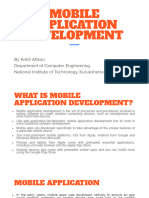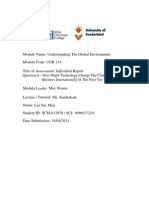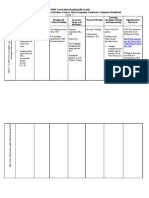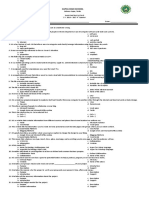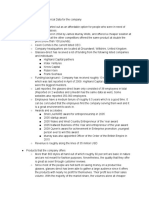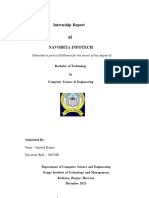0% found this document useful (0 votes)
37 views10 pagesReview Exercises
The document discusses key aspects of mobile app development including describing the purpose of mobile apps, identifying the main steps in the development process, explaining the importance of user feedback and beta testing, discussing the benefits of regular app updates, describing the main types of mobile apps, and discussing user interface design and categories of mobile apps.
Uploaded by
albertndayishimiye91Copyright
© © All Rights Reserved
We take content rights seriously. If you suspect this is your content, claim it here.
Available Formats
Download as PDF, TXT or read online on Scribd
0% found this document useful (0 votes)
37 views10 pagesReview Exercises
The document discusses key aspects of mobile app development including describing the purpose of mobile apps, identifying the main steps in the development process, explaining the importance of user feedback and beta testing, discussing the benefits of regular app updates, describing the main types of mobile apps, and discussing user interface design and categories of mobile apps.
Uploaded by
albertndayishimiye91Copyright
© © All Rights Reserved
We take content rights seriously. If you suspect this is your content, claim it here.
Available Formats
Download as PDF, TXT or read online on Scribd
/ 10




















